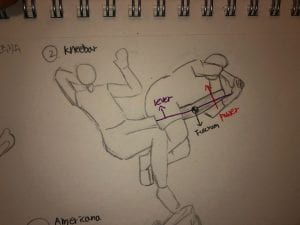Inquiry Question: How Does a Brazilian Jiu Jitsu practitioner’s understanding of physics (Levers) make him or her more effective?
If you know the principle of leverage, you can win regardless of your weight. Knowing where the body’s support points are and where to give the force can break the opponent’s arm or leg, or surrender the opponent. Therefore, the jujitsu is associated with the physics.
Why does Jiu Jitsu follow this progression?
Jujitsu is a movement that breaks down the opponent’s balance and attacks after lying on the floor.When the opponent is lying on the floor, part of the opponent’s body can be called a lever, and the opponent will tap when you pull or push of part of opponent’s body. Therefore, it is easy to compare a person’s body with a lever if you know the principles of leverage.
Why does Brazilian Jiu Jitsu want control?
Jujitsu is the first to quickly identify the opponent’s weaknesses and strengths, and to use them to surrender the opponent. If you have control, you will lose less power than the opponent, and if you are caught by the opponent, you will be able to get out quickly. Having control would easily overpower on the opponent.
Wristlock. An armlock in grappling is a single or double joint lock that hyperextends, hyperflexes or hyperrotates the elbow joint or shoulder joint. An armlock that hyperflexes or hyperrotates the shoulder joint is referred to as a shoulder lock, and an armlock that hyperextends the elbow joint is called an armbar.
A kneebar (also known as legbar, kneelock or hiza-juji-gatame) is a leglock that can hyperextend the knee. The basic kneebar technique is similar to that of an Armbar. The practitioner then applies pressure with their hips, forcing the opponent’s leg to straighten, hyperextending the knee joint.
The americana lock, also known as the bent armlock, keylock, top wristlock and figure four armlock in catch wrestling, or ude garami in judo, is a common grappling submission consisting of the attacker controlling his opponent’s arm (bent in an “L” shape), by using a clever double wrist control which leaves the adversary’s elbow and shoulder joints vulnerable to the submission



